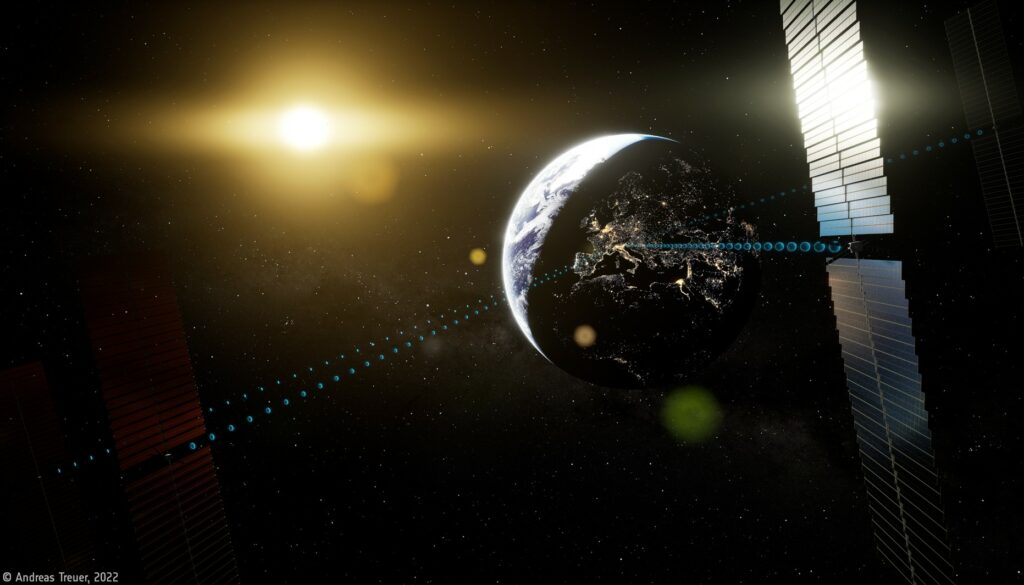The European Space Agency (ESA) has been given the go-ahead by its 22 members to begin a study into generating solar energy from satellites in space to be beamed down to Earth.
A summit of European science ministers in Paris in late November considered the next priorities for the European Space Agency, including whether it is possible to build commercial power stations in orbit. These satellites would convert sunlight into electricity and radiate it to Earth.
The ESA's initiative, also known as the Solaris programme, will decide whether such an initiative could secure Europe's energy supplies in the context of an increasingly severe climate crisis.
Interest in solar power is growing as the technology becomes more efficient and prices fall; it is now the most affordable way to generate electricity in the Middle East and Australia. Yet solar panels in space could be constantly exposed to stronger solar rays. Undimmed by Earth's atmosphere, it is expected that panels in orbit could generate almost twice as much energy as on Earth.
Wireless transmissions
A solar energy system in space would include satellites over a kilometre long that catch the 24-hour sunlight. The energy would be beamed down to Earth through microwaves – possible in theory although an enormous technological challenge to achieve in practice.
Previously, the technology to carry out such an idea on so large a scale was unavailable. Yet recent advancements are lowering the cost of reusable rockets and satellites. The technology to use robots to build energy infrastructure in space has also developed.
Related News
- Belgian selected for ESA space missions
- ESA chief: European astronaut to walk on the moon within decade
- Belgium 'substantially increases' investment in EU space programme
The Solaris project will further develop the technology and assess whether the feat can be accomplished. "The Solaris project will first investigate whether this is really feasible before we ask for billions of euros," said Sanjay Vijendran, the project coordinator.
A cost-benefit analysis commissioned earlier this year demonstrated that the energy could be available by 204o. Whether practical to produce in space, solar power looks likely to dominate the energy landscape moving forward.

